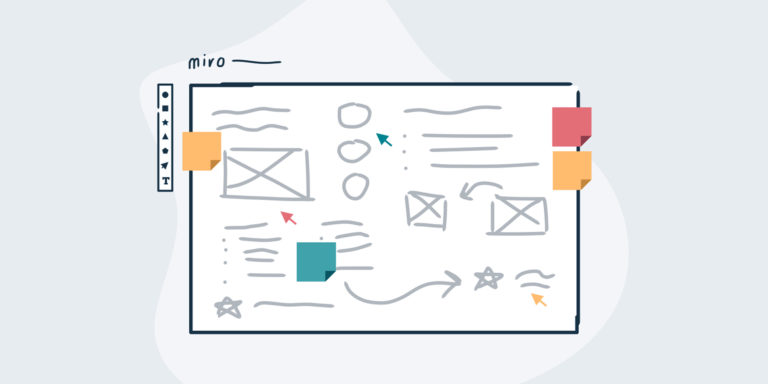Tips for managing remote design teams

Some are lucky enough to be able to work from home during this period of social distancing, including many of us managing remote design teams. For a few of us—including myself, an introvert at heart—that’s been an easy transition. I’ve actually felt more productive and comfortable to a degree.
For others, everything has been turned upside-down, and the challenges have come in many different forms. Some of your team members are simultaneously working from home and running virtual classes for their children. Others may have a space that’s too small, loud roommates, or a bad internet connection. Extroverts who create their best work while in the company and aura of their colleagues may be facing a huge challenge now.
In all of these situations, work can come with more friction than usual. And regardless of your particular situation, we’re all doing our very best to adapt to working fully distributed.
As a manager and team leader, I’ve picked up a few tips that have helped me to stay connected and in sync with my team during this time. Here are my recommendations.
Stay connected and be a positive influence for others
- Be nice to people. Try not only to be self-aware, but more importantly, be aware that everyone on your team is processing this situation in a way that is specific to them. For some, remote work in this environment is very difficult. Kids are jumping in on conference calls, people are feeling lonely or worried about family members or friends, partners have lost their jobs, etc. I’ve witnessed many of these situations first hand, and I can assure you that every one is unique. To break the ice at the beginning of a call, I’ll sometimes share that my 4-year-old may pop in and say hello. Everyone can use a little extra support and kindness from their network right now, and you have the ability to be a source of empathy and positive influence for others.
- Drop a line frequently. Even if you’re getting a common answer like, “I’m doing OK,” sending a message and asking, “How are you doing? Is there anything I could give you a hand with?” can be meaningful. The cool thing I’m realizing is that this simple act is super scalable—whether you’re on a small team or manage larger groups—and it can make a big difference for you and others.
- Look for clever ways to inspire and uplift your team. You can mail out a small package with a familiar office snack or publicly acknowledge the hard work of your teammates. Either way, do what feels authentic to your team. I attended a casual lunch gathering on Zoom with my team. It was simple, but very uplifting.
Dust off those meeting and video conferencing best practices
- Think about cancelling meetings if you don’t truly need to attend or hold them. I think we’re all discovering that attending video meetings all day long can take a toll on your energy, and video meetings require a different level of participation than in-person meetings. It’s worth taking a look at any recurring meetings and questioning whether or not they’re providing value for everyone invited. One thing I’ve tried a few times successfully is to create a brief screen and audio recording that provides direction or explanation on a specific idea, and post that in a Slack channel for everyone to watch when they can. Sometimes teams can come to conclusions much more quickly in a written thread than they would in a designated time slot on a calendar that you may all feel obligated to fill.
- Think carefully about your meeting agenda. If you’re hosting a team meeting, prepare the agenda and send it in advance. We already shared some context around this recommendation in How We Ran a Successful, 8-Hour, Remote Client Working Session. This extra step is always important in any context, but it’s especially important right now since it helps everyone on your team to be as intentional as possible with their time. If you find yourself forcing the creation of a meaningful agenda, this may be a sign that you can postpone or cancel the meeting.
- Set a stage for equal participation. In virtual meetings specifically, facilitating equal participation among your team can be challenging. In some video meetings that I’ve organized, we’ve been trying out a quick “round-robin”—specifically calling on everyone for their input. If team meetings are really large, you can encourage everyone to drop a question into the Zoom chat or use the ✋emoji to be called on.
- In design meetings, try using more demos (and fewer bulky slides). A demo evokes more of a narrative. Whether you’re sharing a prototype within InVision or a collection in Abstract, you can more easily pass that around and collect comments and feedback during or after the meeting. We can all do with fewer synchronous presentations right now.
- Give a simple nod while on video. This is another small but meaningful act as you’re trying to stay connected to your team. A quick nod will provide reassurance to whoever is speaking that they’re being heard and have your full attention.
Help yourself and others to stay focused and active:
- Try out walking meetings. All of the great thinkers of history were onto something! Not only will walking meetings break up your day and give you an opportunity to exercise, the change in perspective has the potential to foster creativity and innovation. Ask one of your teammates if you can take a scheduled 1:1 meeting over the phone while you walk and talk. If there’s a meeting on your calendar that you need to dial into primarily to listen, grab your phone and head outside. If nothing else, it’s a nice change of scenery.
- Try to keep your blood pumping during your down time. Since those of us working from home aren’t commuting anymore, and we only ever need to walk to the kitchen for lunch, regular moments of daily activity have significantly decreased. Encourage your team (and yourself!) to find time for small pockets of activity during the day. Don’t be afraid to get up and walk around or even do some jumping jacks during a 5-to-30-minute break. (Here’s a nice home workout that I enjoy.) Doing this can help you to think through a problem you’re trying to solve, or give you much-needed time away from anything you may be stuck on.
- To make room for all of the above, be understanding of those who need a more flexible schedule (if the job allows). We all need to find time in our day right now to get some fresh air, or at least to get away from our screens. Some of your team members may need to switch things up and do the work that requires more focus during a time when they have the most energy—whether they’re an early bird or night owl. As long as everyone’s clearly communicating about their schedule, able to attend important meetings, and is using the flexibility appropriately for the role, this can be a worthwhile experiment for everyone.
Be kind to others, and also to yourself
We’re all in this together. Respect, compassion, and communication, no matter the distance between yourself and another human right now, is key.
I hope that these tips help you to better connect with your design team or those you manage. Shoot me a DM—I’d love to chat more about your own lessons learned! 😊



